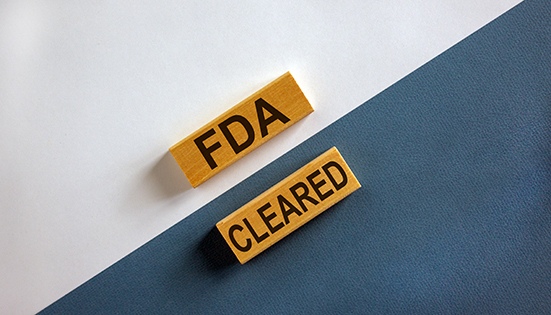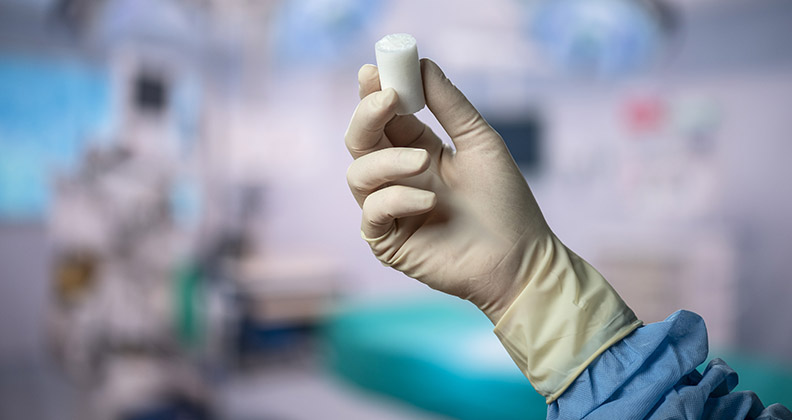
Bringing a product to market is heavily layered with external factors like competition, regulatory requirements and technology advancements in materials and design and development tools. Therefore, orthopedic OEMs of all sizes rely on outside help for research, design, prototyping, testing, regulatory clearance and more—a growing inclination, according to outsource partners.
Contract manufacturers and a product design and engineering firm spoke with BONEZONE about trends they see and benefits of working with outsourced design services.
Our panel included:
- Cory Colman, Life Sciences Group Vice President, Sales & Marketing, NN Life Sciences
- Matthew Leyden, Principal, Primordial Soup (Psoup)
- Ashish Shah, Vice President of Research, Design & Engineering, Viant
- Nicole Sroka, Product Development Engineer, Orchid Orthopedic Solutions
What trends have you noticed in recent product design work?
Colman: We see OEMs that need assistance with metal-to-polymer conversion as well as OEMs that want suppliers to develop and own the 510(k). We’re also seeing more utilization of single-use instrumentation kits, and drug therapies combined with implants or procedural kits.
Leyden: It seems to me that FDA’s 510(k) process is allowing less differentiation between new designs and predicates without clinical evidence that demonstrates that the differences do not increase the risk to the patient. Meanwhile, the ability for a new company to sell a product into a clinic requires more differentiation to break through the barriers put up by the entrenched companies. Those competing requirements are getting more difficult to balance.
Shah: The single-use device market is a real growth area. Redesigning single-use orthopedic devices to replace reusable ones takes expertise. Testing is key, here. These devices have to have the look, robust “feel” and performance of a reusable device, at less cost.
Sroka: Of course, we have noticed the general trends in the orthopedic industry, such as an increasing acceptance of the use of robotics and navigation techniques and the opportunities these create with minimally invasive techniques. These are all areas we are increasingly asked to work in, such as designing end effectors for robots or new minimally invasive instrumentation. The interest in 3D printing is also spreading with different and newer applications, and as the products become accepted and approved by FDA and international regulatory authorities. Single-use instruments, often in sterile packed kits, are becoming increasingly popular, particularly in trauma due to potential sterile processing department cost savings or other workflow efficiencies.
What advantages can be gained in leaning on a supplier to assist with design?
Colman: Speed to market! We can get through the design gate process faster than large OEMs with complicated systems. We can incorporate our manufacturing experience in the development process, providing Design for Manufacturability (DFM), rather than waiting until the design is complete and then having to do another iteration to incorporate DFM. The point of reference that we provide is extremely valuable to the OEM. We see hundreds of different products that allow us to be able to understand what success looks like, and can incorporate that experience into the design and development process.
Leyden: A design firm attracts employees who love to design and are good at it. I think they are attracted to the variety of subject matter, casual atmosphere and the flat management structure. It has been my experience that a good design is the key to a project’s success, so invest in your design team. There will be no need to manage your way out of problems, because a good design will allow you to avoid them in the first place.
When you employ a design firm, you gain access to an entire team and millions of dollars’ worth of equipment. The solution to your design problem will almost certainly benefit from exposure to a wide variety of experiences and techniques that the design firm has gained while working in other industries. A design firm’s workloads can be adjusted depending upon the project’s needs. If you need to take a break for a while and raise money, you can. If you want to accelerate the progress and put 10 people on the project, you can. Projects do not have a constant demand for resources, and that financial flexibility is a large benefit.
Shah: Typically, OEMs have strong in-house design groups and don’t invest heavily in manufacturing engineering. This relieves the OEM of a large part of the burden of developing new products, and allows them to focus on their customers and core competencies. Their design team relies on suppliers to provide Design for Excellence and other expertise that is not part of the OEM’s core bandwidth. Because they serve many customers, suppliers have experience with a wider range of solutions. Suppliers are also motivated to stay on top of technology and learn about the latest innovations in materials and techniques.
Sroka: Getting assistance with design from a contracted supplier can provide fresh insight and a different perspective. A supplier is usually able to move the development timeline along quickly, allowing the contracting company to focus their efforts on the products that may otherwise be stuck in the pipeline due to resource constraints. Additionally, working with a vertically integrated supplier that can also provide manufacturing support can allow for a much smoother design transfer by incorporating DFM feedback early on in the design process.
Do you expect device companies to outsource more design and development work in the coming years? Why or why not?
Colman: We expect so, and it is the reason why we have invested in the design and development process. We have a dedicated Advanced Manufacturing and Technology Center, standalone engineering and development resources, and have fully vertically integrated manufacturing and sterile pack capabilities. OEMs continue to see the value of focusing on what is “core” to their business and allow us to focus on what is “core” to ours.
Leyden: Outsourcing will increase in the coming years because it makes a great deal of financial sense. A good design firm can have a product ready for human use in the time it would take for a startup to put together and equip a decent team.
Shah: Yes, I expect outsourcing to increase for two reasons. First, companies are becoming increasingly lean and looking to outsource more steps in the design and development process. And second, OEMs don’t have the wide variety of technologies that are necessary for developing a product.
We worked with one customer to design and develop orthopedic instruments for a joint replacement system. We leveraged our materials expertise to develop an innovative hybrid metal and polymer design that was lighter and easier to use. We also developed a patented two-shot marking method that addressed a key surgeon complaint by making product markings easier to read and impervious to the cleaning and sterilizing procedures that previous products couldn’t withstand. The new instruments actually became a selling point and helped drive implant sales.
Sroka: Resource constraints resulting from competing development projects, changes in regulatory requirements and other challenges often lead device companies to outsource. The need to keep abreast of new technologies such as robotics, navigation, 3D printing and various coating technologies can also be a drain on internal resources. When OEMs are facing resource constraints, design and development contractors provide a solution to help OEMs hit their targets for releasing products to the market in a timely manner.
HT
Heather Tunstall is a BONEZONE Contributor.




